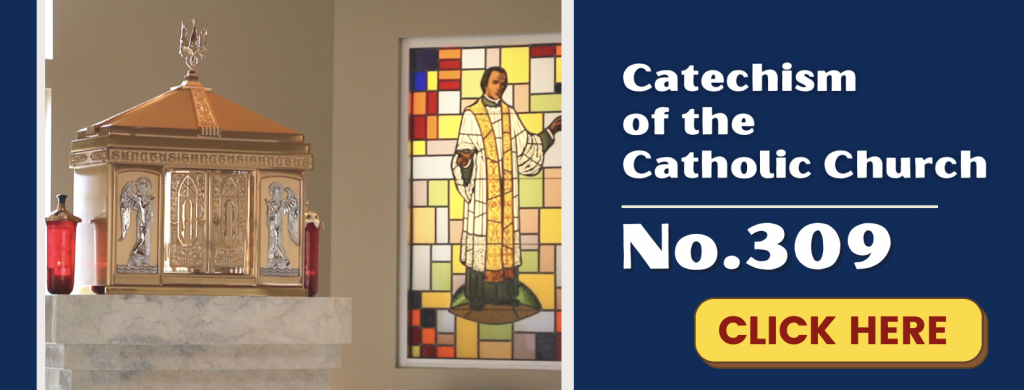


For greater things you were born.” (Ven. Mother Luisita)
THURSDAY, April 9th“ Lk. 24: 35-48 “The disciples of Jesus recounted what had taken place along the way, and how they had come to recognize him in the breaking of bread.”
Two disciples are recounting to the other Apostles in Jerusalem, Jesus’ appearance to them on the road to Emmaus.
Today’s Gospel continues…
While they were still speaking about this, he stood in their midst and said to them, ‘Peace be with you.’
But they were startled and terrified and thought that they were seeing a ghost. Then he said to them, “Why are you troubled? And why do questions arise in your hearts?”
“Look at my hands and my feet, that it is I myself. Touch me and see, because a ghost does not have flesh and bones as you can see I have.” And as he said this, he showed them his hands and his feet.
“While they were still incredulous for joy and were amazed, he asked them, “Have you anything here to eat?” They gave him a piece of baked fish; he took it and ate it in front of them.
He said to them, “These are my words that I spoke to you while I was still with you, that everything written about me in the law of Moses and in the prophets and psalms must be fulfilled.” Then he opened their minds to understand the Scriptures.
And he said to them, “Thus it is written that the Christ would suffer and rise from the dead on the third day and that repentance, for the forgiveness of sins, would be preached in his name to all the nations, beginning from Jerusalem.
Then Jesus says to them: “You are witnesses of these things.”
POINTS OF MEDITATION:
We are aware of the four Gospel accounts of the Resurrection of Jesus. But most are unaware that the Catechism of the Catholic Church provides a cogent Apologetic defense of the Resurrection of Christ! As Fr. Ed says, Apologetic does not mean apologizing for doctrines of the faith, but defending them! See CCC 638-658. Highlights provided here.
638 “We bring you the good news that what God promised to the father this day he has fulfilled to us their children by raising Jesus.”489
- The Resurrection of Jesus is the crowning truth of our faith in Christ, a faith believed and lived as the central truth by the first Christian community;
- Handed on as fundamental by Tradition;
- Established by the documents of the New Testament; and
- Preached as an essential part of the Paschal mystery along with the cross:
Christ is risen from the dead! Dying, he conquered death; to the dead, he has given life.
640 “Why do you seek the living among the dead? He is not here, but has risen.”493
- Empty tomb. First step toward recognizing the very fact of the Resurrection.
- This was the case, first with the holy women, then with Peter.495
- The disciple “whom Jesus loved” affirmed that when he entered the empty tomb and discovered “the linen cloths lying there”, “he saw and believed”.496
643 Given all these testimonies, Christ’s Resurrection cannot be interpreted as something outside the physical order – impossible not to acknowledge it as an historical fact.
- It is clear from the facts that the disciples’ faith was drastically put to the test by their master’s Passion and death on the cross, which he had foretold.503
- The shock provoked by the Passion was so great that at least some of the disciples did not at once believe in the news of the Resurrection.
- Far from showing us a community seized by a mystical exaltation, the Gospels present us with disciples demoralized (“looking sad”504) and frightened.
- For they had not believed the holy women returning from the tomb and had regarded their words as an “idle tale”.505
- When Jesus reveals himself to the Eleven on Easter evening, “he upbraided them for their unbelief and hardness of heart, because they had not believed those who saw him after he had risen.”506
644 Even when faced with the reality of the risen Jesus the disciples are still doubtful, so impossible did the thing seem:
- They thought they were seeing a ghost. “In their joy they were still disbelieving and still wondering.”507
- Thomas will also experience the test of doubt.
- St. Matthew relates that during the risen Lord’s last appearance in Galilee “some doubted.”508
- Therefore the hypothesis that the Resurrection was produced by the apostles’ faith (or credulity) will not hold up.
- On the contrary their faith in the Resurrection was born, under the action of divine grace, from their direct experience of the reality of the risen Jesus.
645 By means of touch and the sharing of a meal, the risen Jesus establishes direct contact with his disciples.
- Recognize that he is not a ghost.
- Risen body, same body that had been tortured and crucified, for it still bears the traces of his Passion.509
- Yet at the same time this authentic, real body possesses the new properties of a glorious body: not limited by space and time but able to be present how and when he wills;
- Risen Jesus enjoys the sovereign freedom of appearing as he wishes: in the guise of a gardener or in other forms familiar to his disciples, precisely to awaken their faith.
- Christ’s humanity no longer confined to earth, belongs to the Father’s divine realm.
646 Christ’s Resurrection was not a return to earthly life…
- As was the case with the raisings from the dead that he had performed before Easter: Jairus’ daughter, the young man of Naim, Lazarus.
- These actions were miraculous events, but the persons miraculously raised returned by Jesus’ power to ordinary earthly life. At some particular moment they would die again.
- Christ’s Resurrection is essentially different. In his risen body he passes from the state of death to another life beyond time and space.
- At Jesus’ Resurrection his body is filled with the power of the Holy Spirit: he shares the divine life in his glorious state, so that St. Paul can say that Christ is “the man of heaven”.512
II. THE RESURRECTION – A WORK OF THE HOLY TRINITY
648 Christ’s Resurrection is an object of faith.
- Transcendent intervention of God himself in creation and history.
- Three divine persons act together as one, and manifest their own proper characteristics.
- The Father’s power “raised up” Christ his Son and by doing so perfectly introduced his Son’s humanity, including his body, into the Trinity.
- Jesus is conclusively revealed as “Son of God in power according to the Spirit of holiness by his Resurrection from the dead”.515
- St. Paul insists on the manifestation of God’s power516 through the working of the Spirit who gave life to Jesus’ dead humanity and called it to the glorious state of Lordship.
649 As for the Son, he effects his own Resurrection by virtue of his divine power.
- Jesus announces that the Son of man will have to suffer much, die, and then rise.51
- Elsewhere he affirms explicitly: “I lay down my life, that I may take it again. . . I have power to lay it down, and I have power to take it up.
IN BRIEF
656 Faith in the Resurrection has as its object an event which is historically attested to by the disciples, who really encountered the Risen One. At the same time, this event is mysteriously transcendent insofar as it is the entry of Christ’s humanity into the glory of God.
657 The empty tomb and the linen cloths lying there signify in themselves that by God’s power Christ’s body had escaped the bonds of death and corruption. They prepared the disciples to encounter the Risen Lord.
658 Christ, “the first-born from the dead” (Col 1:18), is the principle of our own resurrection, even now by the justification of our souls (cf. Rom 6:4), and one day by the new life he will impart to our bodies (cf.: Rom 8:11).